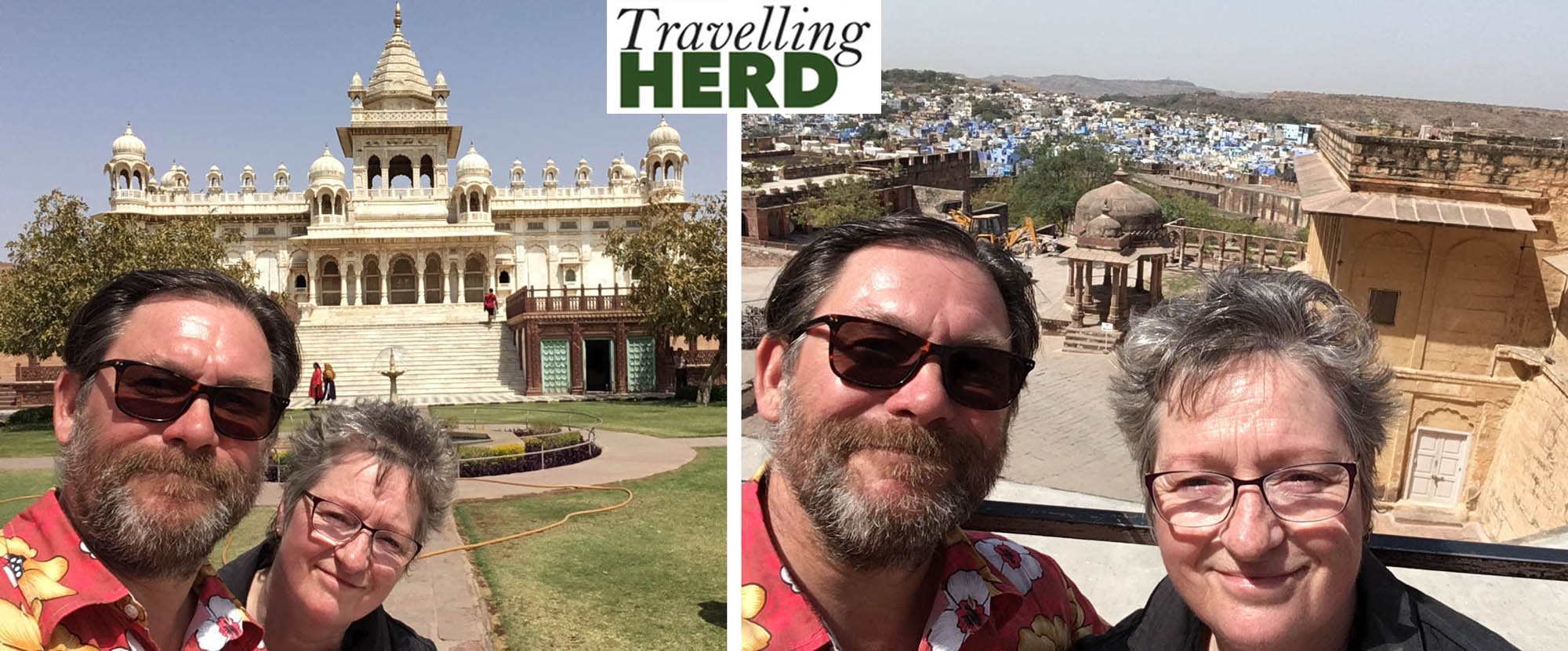Friday 22nd March 2019
We caught a train from the Pink City to Jodhpur, arriving about 18:30 in time for some thirst-quenching water and cold beer and a meal. Matilda was in particular need of liquid refreshment as Robert had reported that the toilets on the train were in a rather unpleasant condition so she had been limiting her water intake to avoid having to use them. When trains are delayed this can become a bit of an issue for her. Matilda is frequently having to balance the need to maintain adequate hydration with her expectation of being able to find acceptable toilet opportunities.
Our hotel, the Ranbanka Palace Hotel, is as the name suggests in part of a palace. It was built in 1927 for Maharajadhiraj Sir Ajit Singh Ji, the younger brother of Maharaja Umaid Singh who built the Umaid Bhavan Palace and it is providing Matilda with some welcome luxury, following the rather parched train journey.

The descendants of Maharajadhiraj Sir Ajit Singh Ji still live in part of the palace but our room faces onto a courtyard with a restaurant, bar, a spa and a pool. The staff are incredibly attentive and helpful and Robert noticed a note in the back of the menu asking guests to treat staff with respect, stating that many had served the family faithfully for years.
Before retiring we booked a car and driver for the following day to take us round those major sites which are a little distant from the city centre.
Saturday 23 March 2019
After an al fresco breakfast, the first stop on tour was Mehrangarh Fort, built around 1460 A.D. by Rao Jodha and said to be one of the most magnificent hill forts in Rajasthan. The Fort is reminiscent of the castles at Edinburgh and Stirling in that it is built on a plug of volcanic rock and it rises almost organically out of a sheer 125 metre cliff.
On arrival at Mehrangarh Fort we were unexpectedly asked for photo ID but we had neither passports nor driving licences with us. We were [thankfully] allowed in but when it came to collecting the audio guide which is included in the price of admission, we were again asked for ID and not allowed to take audio guides without [for India] quite a hefty deposit each. We decided we would just absorb the atmosphere and enjoy the beauty and splendour of the building. As our driver had alerted us to the existence of a lift we paid our 50 Rupees each and took the quick route up to the top.
Jodhpur is known as the Blue City and, looking down from the fort ramparts, we could see why: many of the houses in the old city were painted blue by the brahmins to denote their status. It is also said that painting the houses this traditional colour helps to keep them cooler in the hot summers.
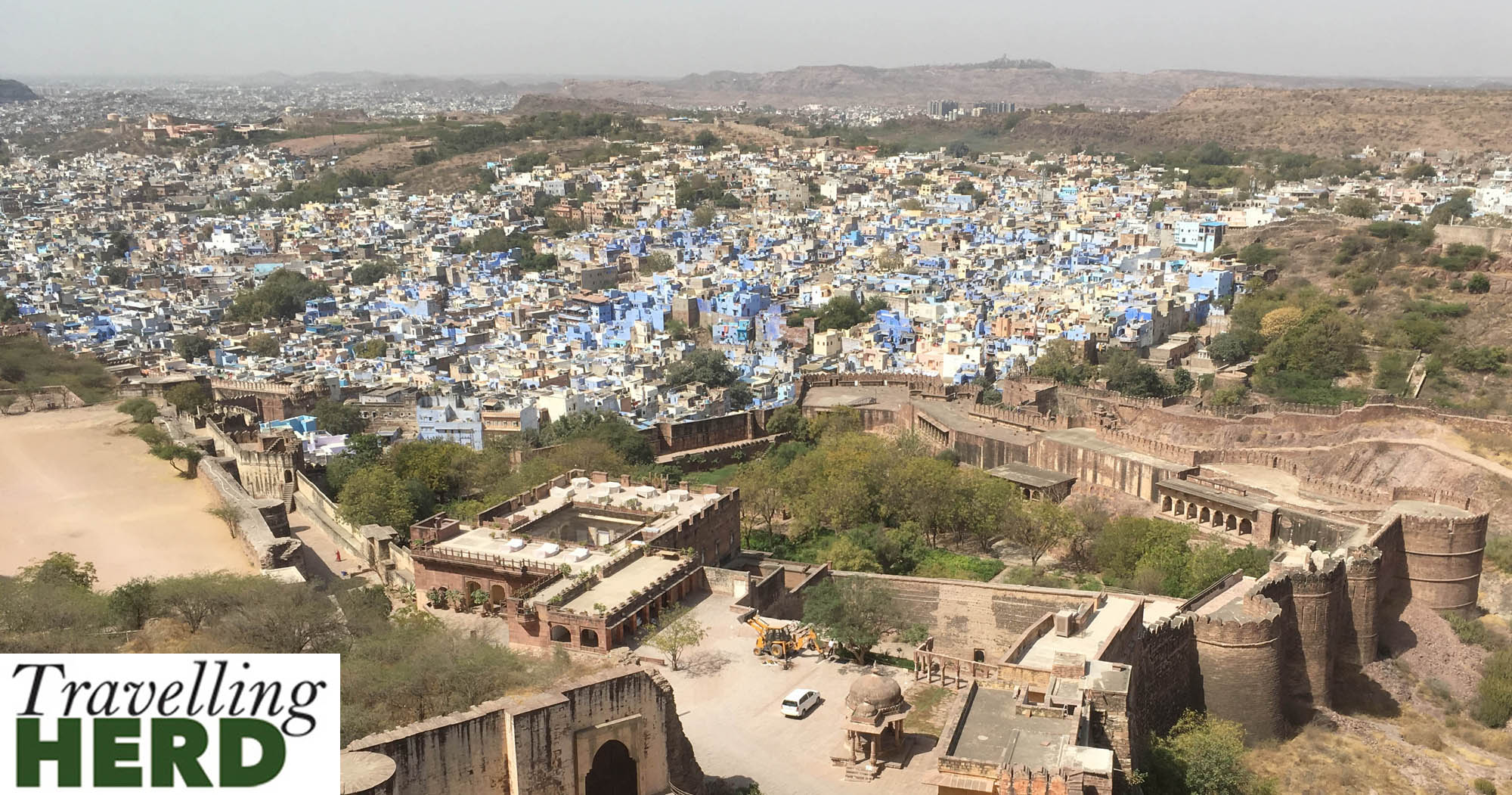
The Mehrangarh Fort was built as a defensive structure and behind this robust exterior [safe from canon balls] there are palatial, residential quarters which feature beautifully intricate carving . . .
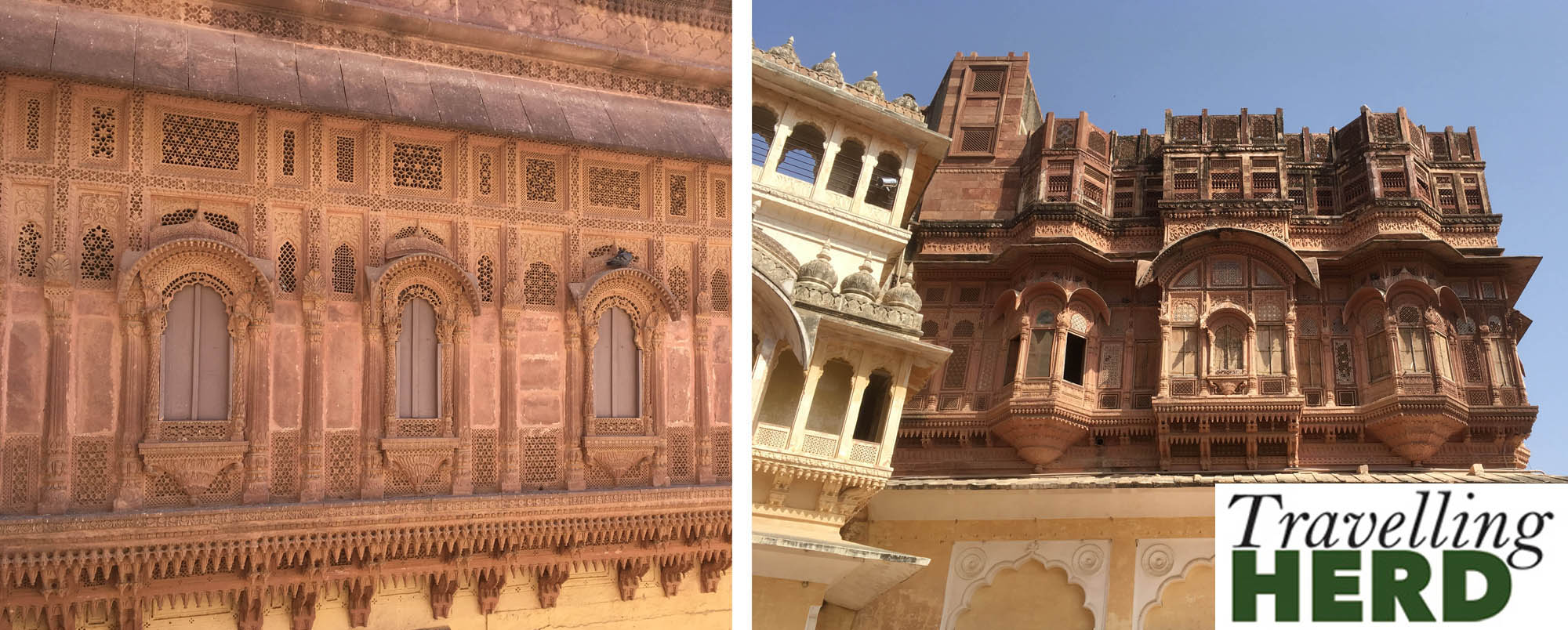
. . . and sumptuous rooms including the Takal Mahal [below left] with a wooden ceiling and the maharaja’s mirrored bedroom [below right].
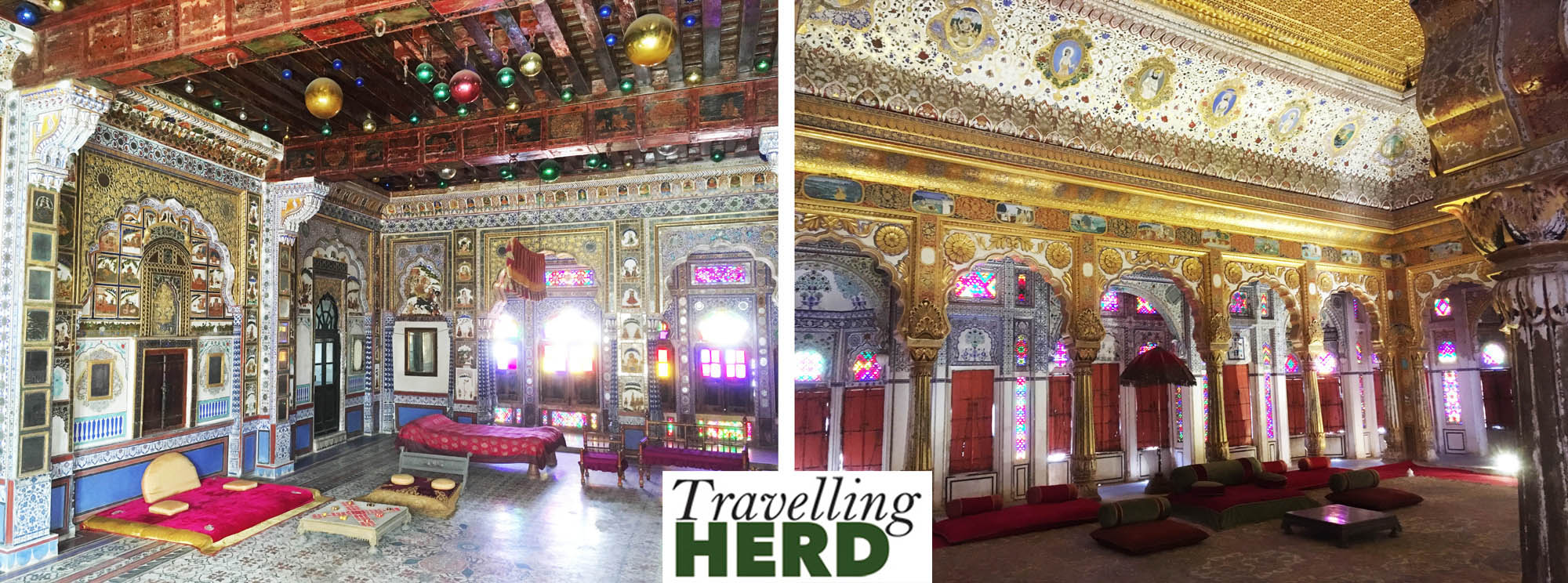
The carving is exquisite and features graceful arches over the windows which we assume are designed to channel the rainwater away.
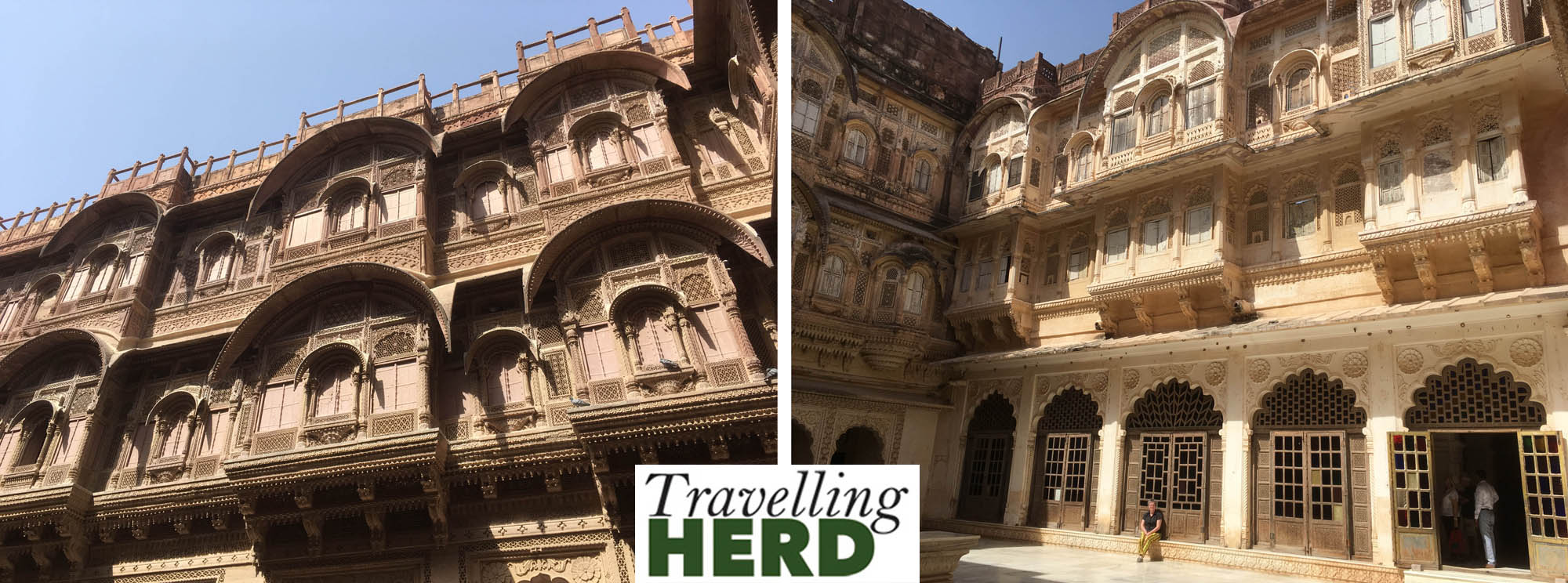
From here we went to the nearby Jaswant Thada, built in 1899 A.D. in memory of Maharaja Jaswant Singh II. This area houses a group of white marble cenotaphs.
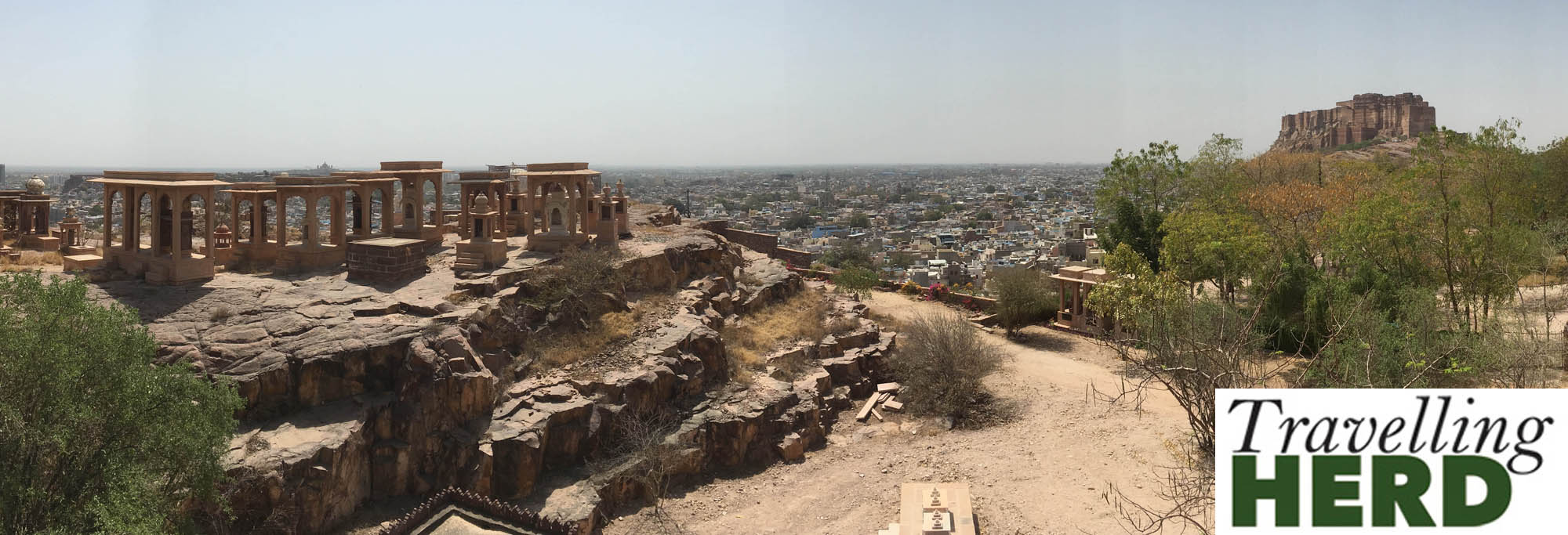
Inside the central cenotaph there is a display of the portraits of various Rathore rulers. It is apparently known as the Taj Mahal of Marwar.
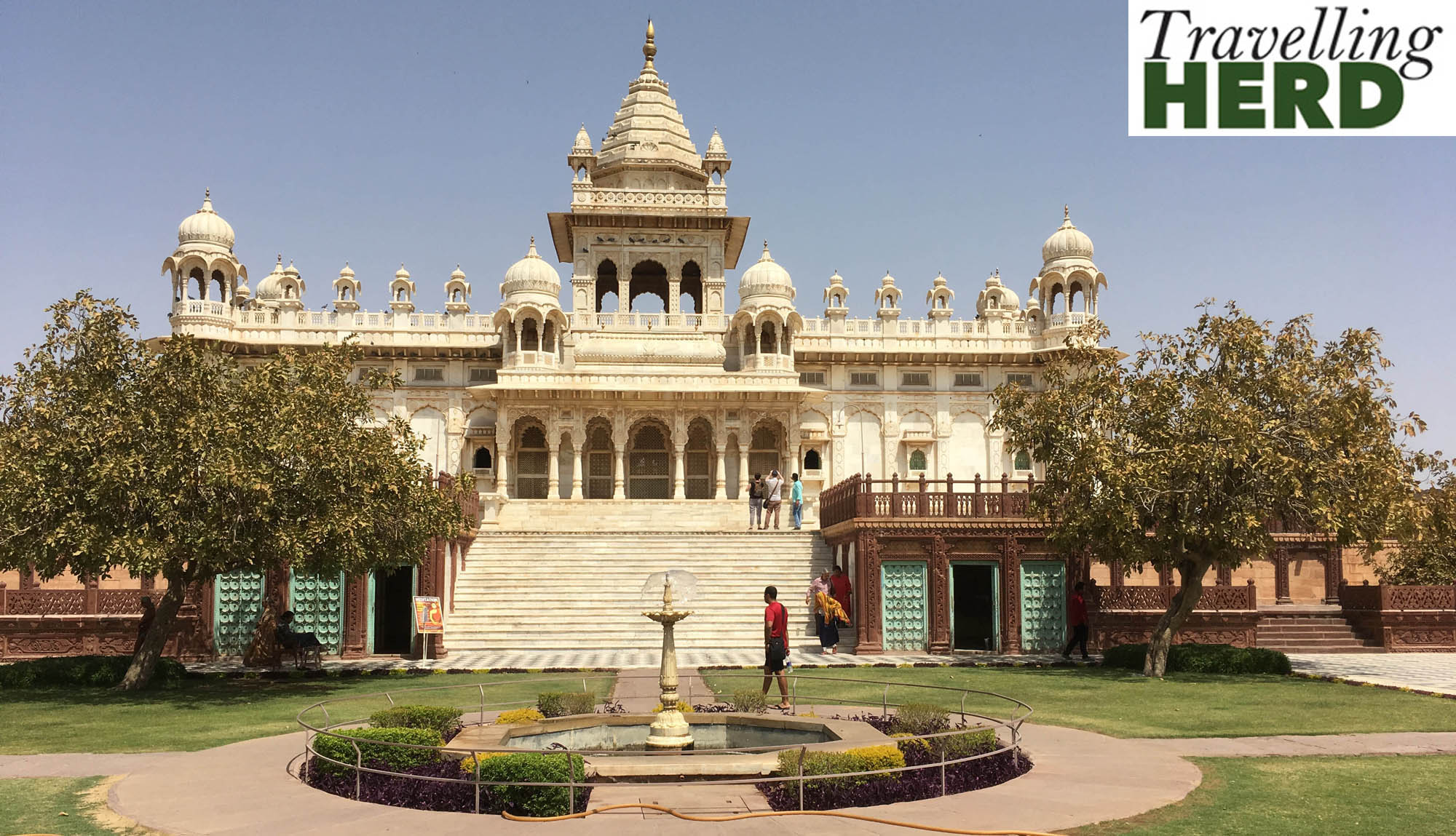
The carvings are again beautiful and intricate and the “Pond of the Gods” at Jaswant Thada is known as the traditional cremation ground for Jodhpur royalty.
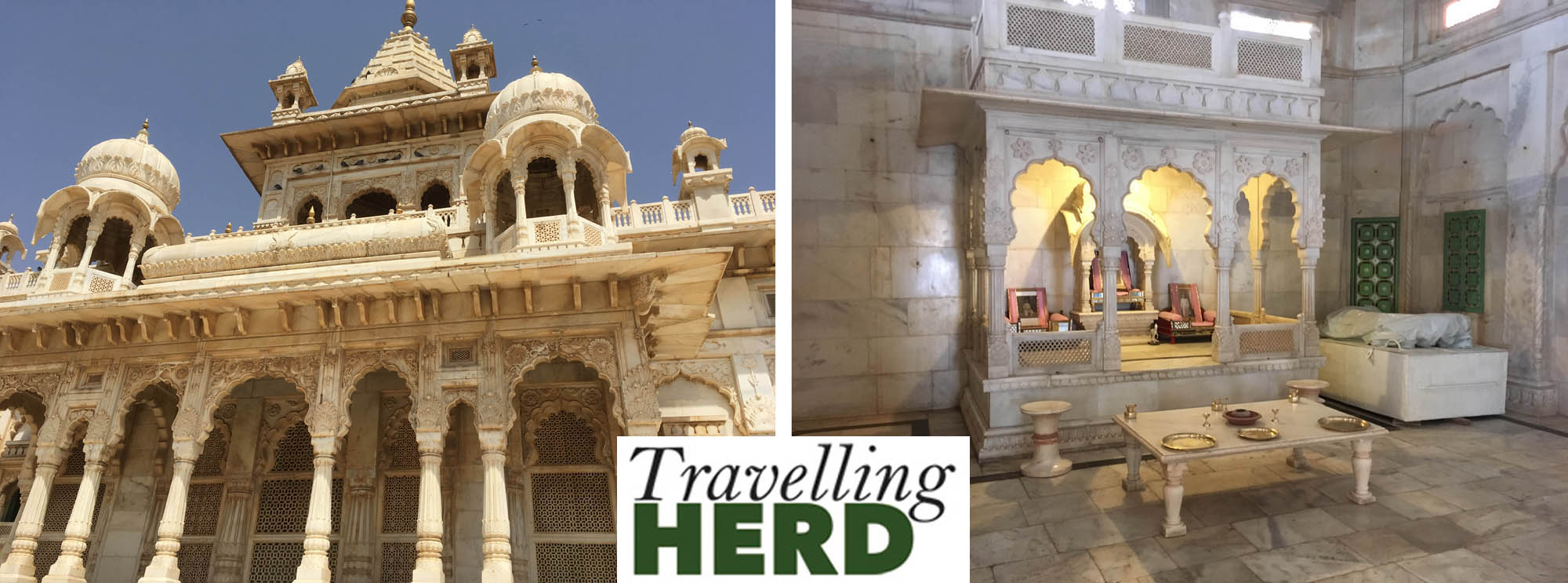
Our third stop was Umaid Bhavan Palace which is said to be one of the largest private residences in the world. Built between 1928 and 1943 by Maharaja Umaid Singh, the grandfather of the current owner Gaj Singh, the palace was allegedly developed as a way to provide work and alleviate the poverty caused by a severe drought. Umaid Singh succeeded his elder brother in 1918 and ruled till his death in 1947. He had a real social conscience and introduced primary education and pensions as well as championing aviation in Jodhpur. He qualified as pilot and set up the Jodhpur Flying Club in 1931 which swiftly became a gateway to the Far East. During the Battle of Britain, Maharaja Umaid Singh was in command in Jodhpur and as the focus of fighting moved to Burma, the Jodhpur airbase came to the fore.
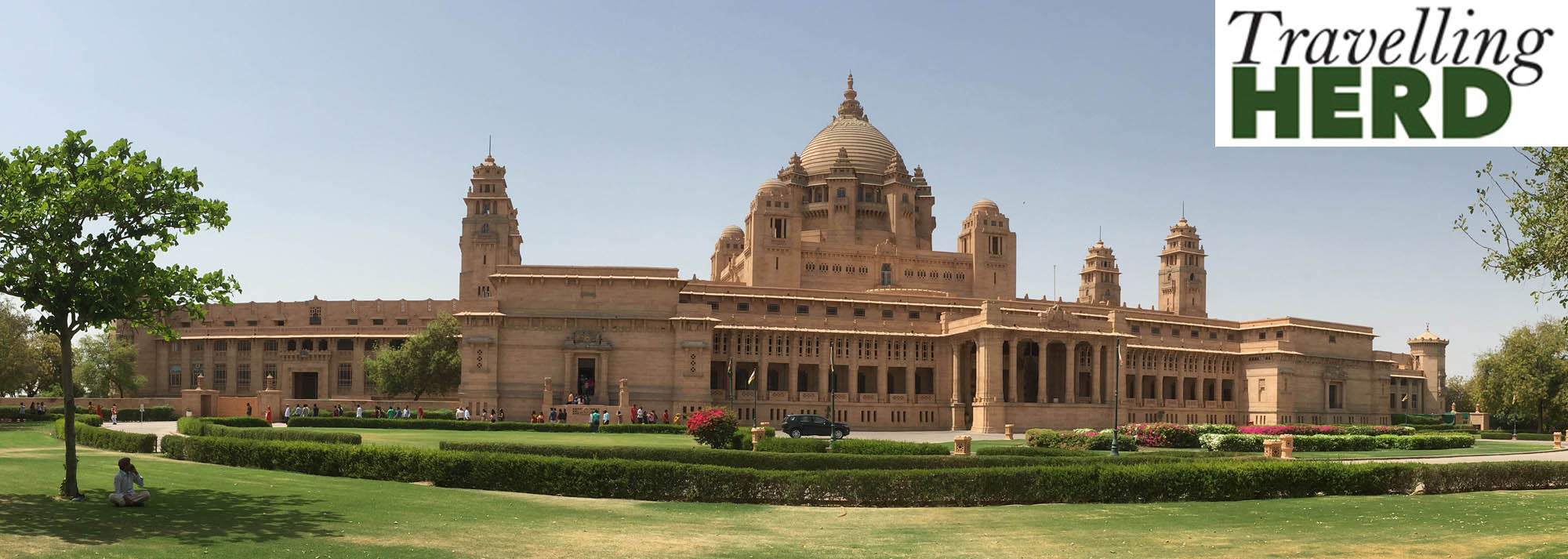
Umaid Bhavan Palace was designed by British architect Henry Lanchester in the Indo-Deco style. It is still a royal residence and part of it has been converted into an exclusive hotel. As we arrived there was an impressive welcome underway – with music, red carpet and awnings for those arriving – whether royalty, guest or resident we were not sure. There is also display of royal vintage cars, which includes a less than imperial Morris Minor.
Our final destination was Madore Garden. Mandore was the old capital of the Jodhpur kings.

There are several carved stone cenotaphs and old temples in the Madore Garden and it is a shame that the moat and fountains were dry. Having seen these more outlying sights, and as the temperature was rising we decided to return to the hotel for a dip in the pool and some chill time.
Current Route Map:
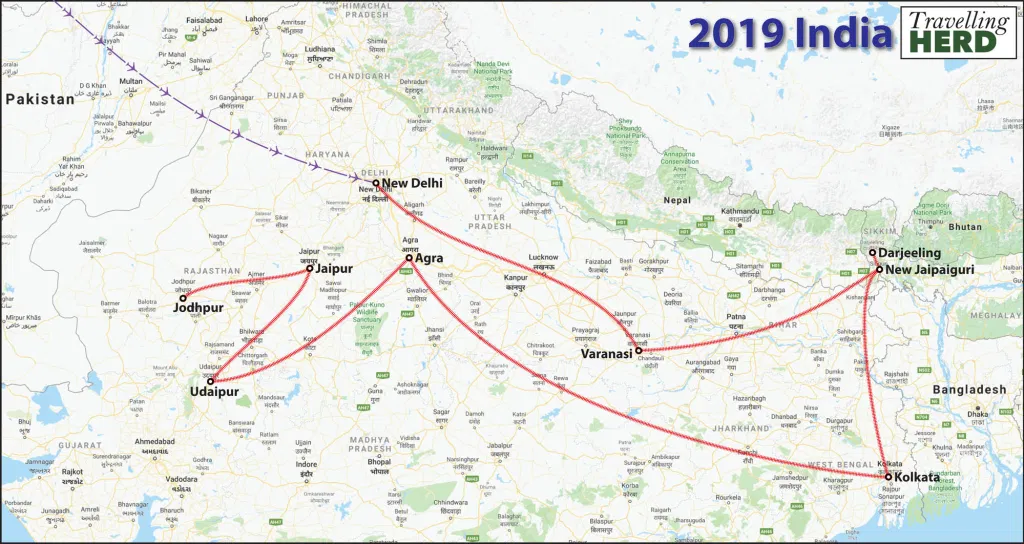
Distance travelled so far:
By Air to Delhi: 4,187miles
By 11 trains to Jodhpur: 3,145miles
Selfies of the day:
